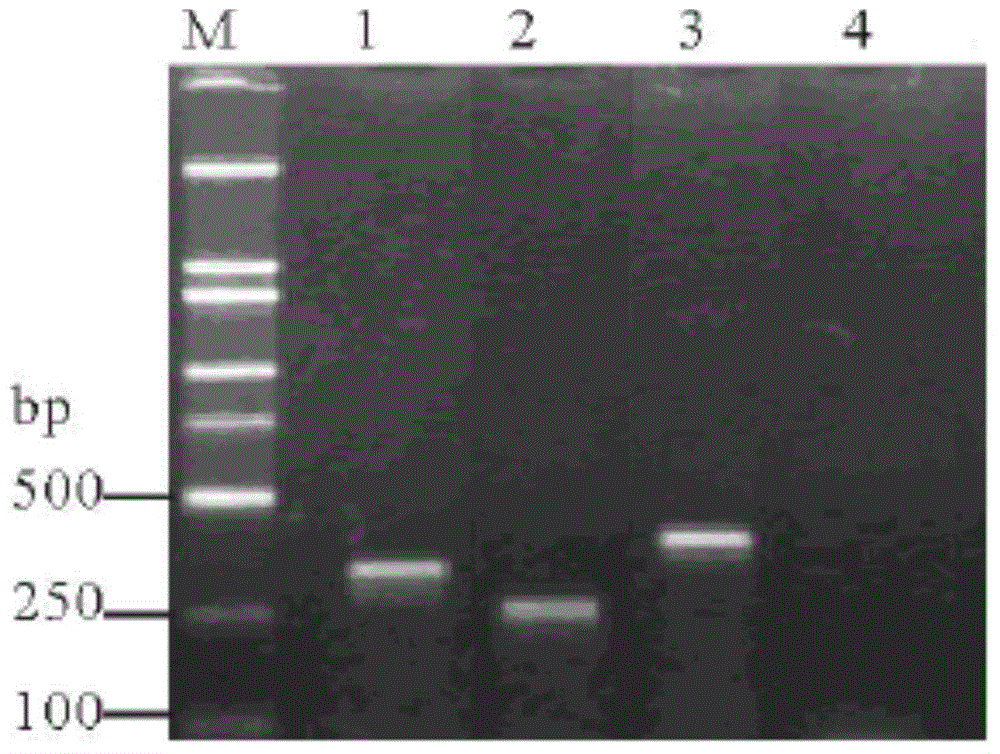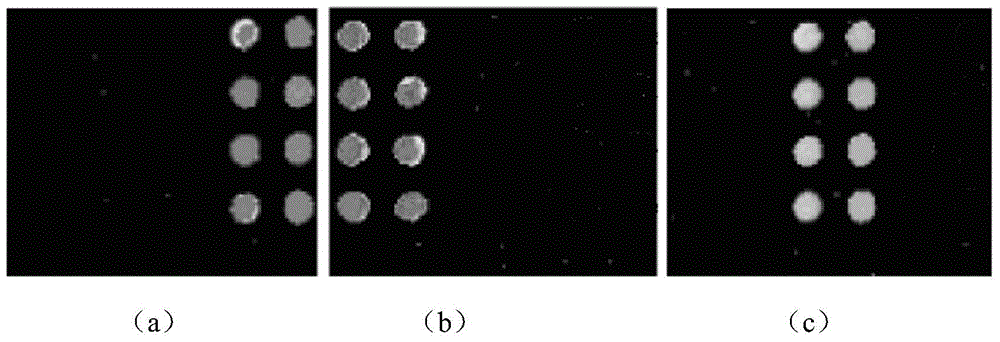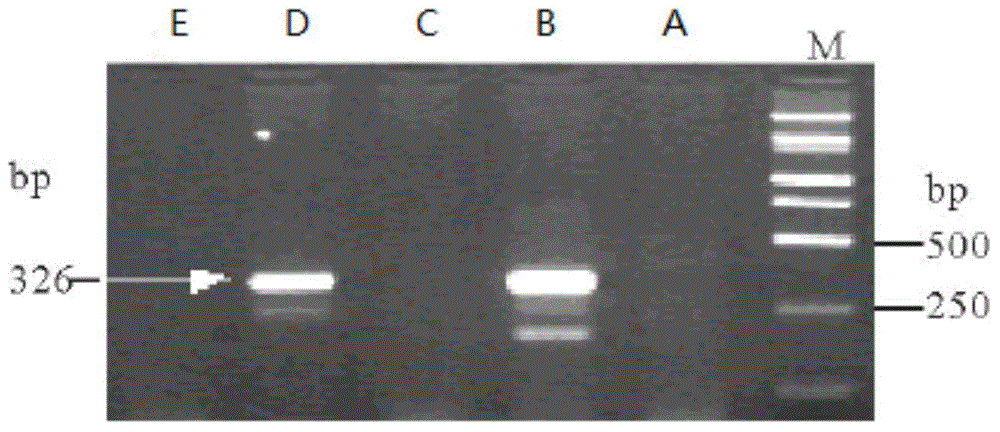Lily virus gene chip and preparation method thereof as well as method for detecting lily viruses using lily virus gene chip
A virus gene and gene chip technology, applied in the field of microbial detection, can solve the problems of long time, difficulty in detecting a large number of samples, cumbersome operation, etc., and achieve the effect of short operation time, stable reproducibility and strong sensitivity
- Summary
- Abstract
- Description
- Claims
- Application Information
AI Technical Summary
Problems solved by technology
Method used
Image
Examples
Embodiment 1
[0067] Embodiment 1 Experimental material
[0068] 1. The source of the virus
[0069] Positive samples: tested by ELISA and electron microscopy, the lily samples confirmed to be carrying CMV, LSV, and LMoV were provided by the Tianjin Animal and Plant Quarantine Institute and the Vegetable and Flower Research Center of Beijing Academy of Agriculture and Forestry Sciences.
[0070] Field specimens: Field lily plant specimens were collected from the lily planting base in Zhangsanying Town, Yanqing County, Beijing. They were divided into 4 specimens, numbered: A, B, C, and D; the lily bulbs were imported from the Netherlands, from Tianjin Entry-Exit Inspection and Quarantine Bureau.
[0071] Negative specimens: maize rough dwarf virus (MRDV), wheat yellow dwarf virus (BYDV), hibiscus chlorotic ringspot virus (HCRSV), geminivirus (WTG); luciferase gene plasmid.
[0072] 2. Reagents
[0073] Trizol RNA extraction kit (purchased from GIBCO, USA); TaqDNA polymerase (purchased fro...
Embodiment 2
[0076] Example 2 Preparation of gene chip
[0077] 1. Design probe
[0078] According to the sequence homology of CMV, LSV, and LMoV strains in the GeneBank database (CMV is subgroup I), alternative probes were designed using Mprobe software for the conserved sequence of the virus coat protein (CP) gene and the negative control rat brain gene , by GeneBank Blast sequence homology comparison, the specific oligonucleotide probe sequences of the CP genes of the three viruses were obtained. Online Blast analysis designed 3 pairs of primers and 6 specific oligonucleotide probes, as shown in Tables 1 and 2.
[0079] Table 1 Probe sequences
[0080]
[0081]
[0082] Table 2 Primer sequences
[0083]
[0084] 2. Synthetic primers and probes
[0085] Primers (CMV F1, CMV R1; LSV F2, LSV R2; LMoV F3, LMoV R3), probes (CMV P1, CMV P2; LSVP3 , LSV P4; LMoV P5, LMoV P6), the specific steps are as follows:
[0086] After the synthesis was completed, deprotection / cleavage treat...
Embodiment 3
[0099] Example 3 Detection of Lily virus
[0100] 1. Primer design
[0101] According to the homology of coat protein gene sequences of CMV, LSV, and LMoV strains in the GeneBank database, oligonucleotide primers were designed, and the primer sequences are shown in Table 3.
[0102] Table 3 Primer sequences
[0103]
[0104] 2. Extraction of total RNA from lily materials
[0105] For the extraction of total plant RNA, refer to the third edition of Molecular Cloning. details as follows:
[0106] 1) After taking out the collected lily corm sample impregnated with CMV from the ultra-low temperature refrigerator, immediately place it in a precooled mortar, add liquid nitrogen to quickly grind it into powder, and obtain the lily corm powder impregnated with CMV;
[0107] The lily bulb powder dipped in LSV and LMoV was prepared according to the method for preparing lily bulb powder dipped in CMV.
[0108] 2) Add 800 μl Trizol reagent to a 2ml centrifuge tube, take 1 g of the...
PUM
| Property | Measurement | Unit |
|---|---|---|
| diameter | aaaaa | aaaaa |
Abstract
Description
Claims
Application Information
 Login to View More
Login to View More - R&D
- Intellectual Property
- Life Sciences
- Materials
- Tech Scout
- Unparalleled Data Quality
- Higher Quality Content
- 60% Fewer Hallucinations
Browse by: Latest US Patents, China's latest patents, Technical Efficacy Thesaurus, Application Domain, Technology Topic, Popular Technical Reports.
© 2025 PatSnap. All rights reserved.Legal|Privacy policy|Modern Slavery Act Transparency Statement|Sitemap|About US| Contact US: help@patsnap.com



